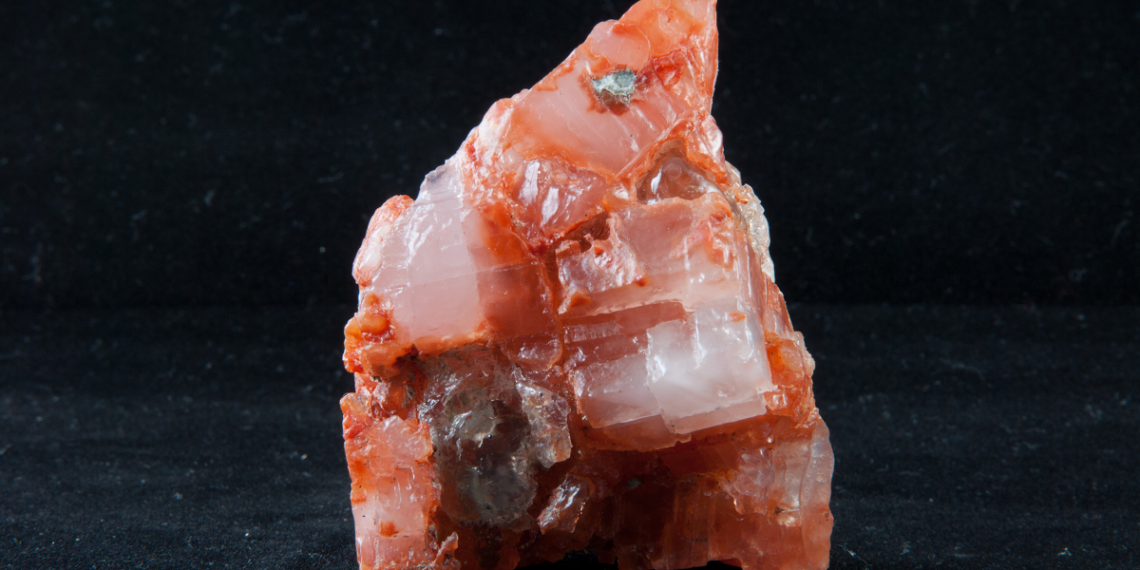What is potash?
The name potash originates from the process of leaching tree ashes in metal pots, leaving a white residue referred to as ‘pot ash’. More commonly, potash refers to a group of potassium-rich minerals and chemicals and is the vital ingredient to produce fertilizer. It is widely used in the agricultural industry to boost crop yields and support plant growth. The most common type of potash is Muriate of Potash (MOP) derived from potassium chloride (KCI), accounting for approximately 95% of the global agricultural potash.
The second major form of potash is Sulphate of Potash (SOP), which is produced chemically instead of being mined. It is advantageous in situations where soil chloride content is high, such as in dry environments. SOP is primarily used as a specialty fertilizer for crops such as fruits, vegetables, and tree nuts.
What is potash mined for?
In an industrial context, potash is used in a wide variety of areas such as ceramics, detergents, glass making, and manufacture of textiles. Potash is also gaining popularity as a green alternative to salt for snow and ice melting purposes.
Potash mining process
Potash is produced either from underground or solution mining. During the traditional underground mining process, tunnel boring machines are deployed to dig out the raw ore, which is then transported to the processing mill at the ground level, where it’s crushed and refined to extract the potassium salts from the potash.
If the deposits are located very deep in the earth, solution mining will be used as an alternative. This method includes injecting a heated mixture of water, magnesium and other salts called brine, deep below the earth’s surface to dissolve the potash deposits. The solution is then pumped up to the surface and the minerals are cooled down in crystallization ponds where the potash is separated and conditioned.
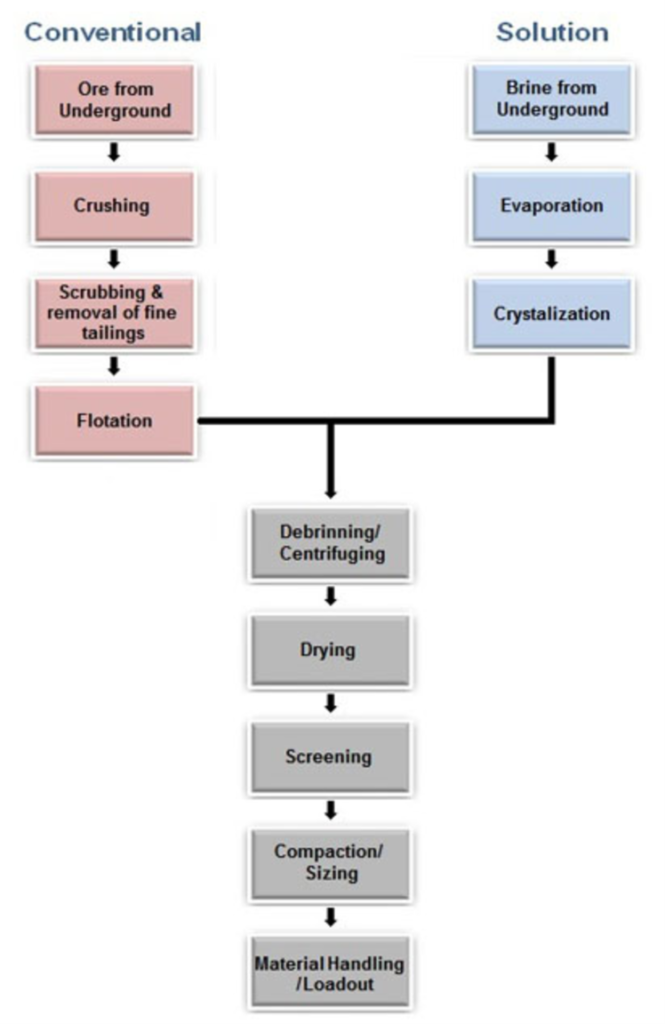
Is potash mining bad for the environment?
Like any raw material production,extracting potash will naturally generate unavoidable environmental impacts, especially solution mining. The open-air ponds used to cool down the brine can be easily contaminated by airborne dust, bacteria, and other chemicals used in potash mining and processing, which can end up in the lean brine that is injected into the salt formation.
When the pond water is reinjected into the deep salt-bearing formation to extract potash, various microorganisms would feed off the organic matter in the absence of air underground, leading to the creation of hydrogen sulphide (H2S) as a by-product.
H2S, which travels with the brine when it’s brought back to the surface, is an extremely hazardous gas for plants and animals, as well as humans. When it oxidizes in the air, it produces sulphuric acid, which can be a highly destructive chemical.
Where is the largest potash mine in the world?
The Jansen Potash Project in Saskatoon, Canada, which is 100% owned by Australian resources company BHP and a major potash industry participant, is the largest potash producing mine in the world. The project includes an estimated initial capacity of 4.35Mt of potash per annum, with the potential to ramp up to around 12Mt a year, according to BHP.
In general, Canada, Russia, Belarus, China and Israel account for at least 85% of the world potash production, according to statistics from the government of Canada.
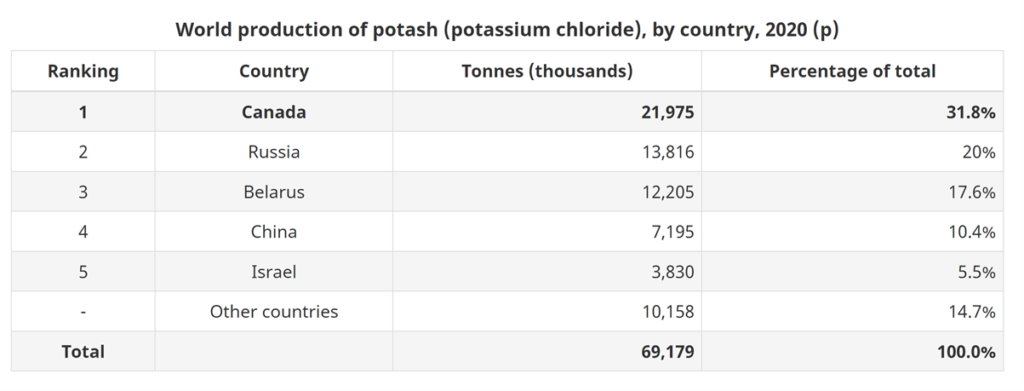
Other major potash mining companies
Nutrien (TSX: NTR | NYSE: NTR)
The world’s largest potash company producing over 20Mt of potash at six potash mines in Saskatchewan, Canada. The company also produces and distributes over27Mt of potash, nitrogen, and phosphate products for agricultural, industrial, and feed customers around the world.
Uralkali (MICEX: URKA)
Russia’s premier potash company accounting for roughly 20% of global supply. The company has five mines and seven ore treatment and processing mills.
Israel Chemicals (NYSE: ICL | TLV: ICL)
An Israel-based global specialty minerals and chemicals company as well as the world’s sixth largest potash producer. The company extracts potash, salts, and other raw minerals from the Dead Sea.
K+S (ETR: SDF)
A German chemical company headquartered in Kassel and one of Europe’s largest suppliers of potash, operating six mines in three districts of Germany. The company also has been expanding elsewhere with projects in Canada, the U.S. and Chile.
Arab Potash Company
The eighth largest potash producer worldwide by production volume and the sole producer of potash in the Arab world. The company has the capacity to manufacture approximately 2.35Mt of potash per year through its four plants in Jordan.
SQM (NYSE: SQM)
A Santiago-based global mining company operating in northern Chile and a major producer of potassium, nitrate, and iodine.
The Mosaic Company (NYSE: MOS)
A leading integrated producer of concentrated phosphate and potash in the U.S. The company’s North America business includes seven potash and phosphate mining facilities primarily located in Saskatchewan, Florida, and Peru. Mosaic’s products account for 40% of North America’ phosphate and potash annual production.
Lithium Americas Corp. (TSX: LAC | NYSE: LAC)
Lithium Americas is a Canadian-based resource company focused on exploration and evaluation of lithium, potassium, and other mineral resources in the U.S. and Argentina.
The company recently announced validation of high-purity, fertilizer-quality sulphate (SOP) by-product from its Falchani Lithium Project in Peru.
Potash supply
Potash is a vital mineral resource. Given its prevalent use in the agricultural industry as a fertilizer, and the fact that there is no viable alternative that contributes as much potassium to soil and crop yields, supply of this strategic commodity plays a pivotal role in global food security.
As Russia, Belarus, and China account for a major chunk of the global MOP output, supply disruptions have been caused since the beginning of 2022 for various reasons, including economic sanctions on Russia and Belarus, as well as export suspension by China to ensure domestic availability. Fear of supply shortage and uncertainty in the short-term is also heightened by soaring fertilizer prices, which have jumped nearly 30% since early 2022, following last year’s 80% surge, as reported by the World Bank.
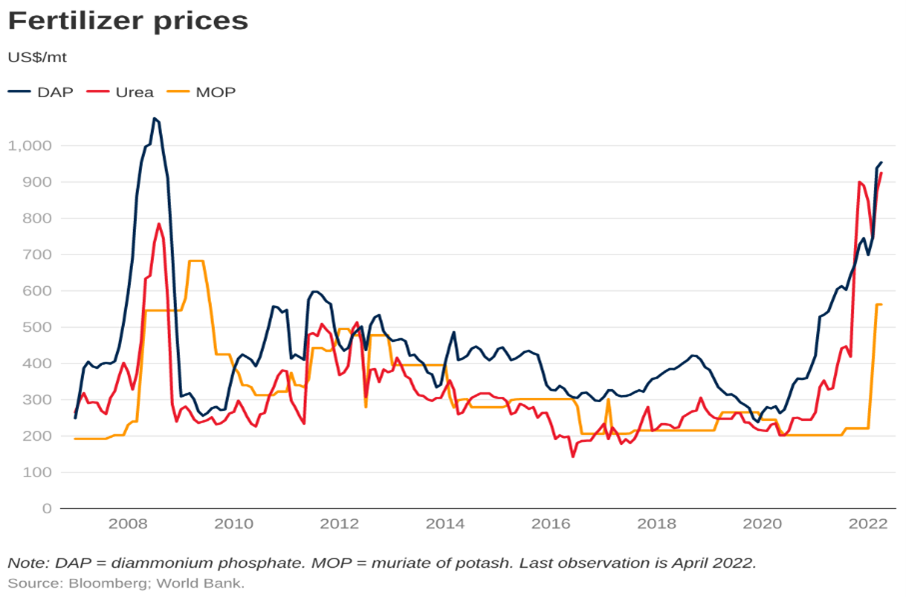
The Russian-Ukraine war has also inevitably worsened global food security, causing disruptions in the Black Sea trading routes. Lithuania has also halted the use of its railroads’ network to transport Belarusian potash to the port of Klaipeda, which normally handles 90% of Belarusian fertilizer exports. On a slightly better note, Russia and Ukraine signed agreements on 22 July to resume millions of tonnes of Ukrainian grain exports, as well as guaranteeing Russian exports of its grain and fertilizers.
U.S. Geological Survey(USGS) estimates that world potash capacity is projected to rise to near 69Mt in 2025 from 62.3Mt in 2021. The expected increase mainly comes from muriate of potash (MOP), from new mines and expansion projects in three of the largest MOP producing counties, including Canada, Russia, and Belarus.
Miners from the major producing countries are ramping up efforts in project expansion and new constructions at home, to grow global potash capacity and satisfy fertilizer demand. For instance, BHP is weighing to advance stage one production from its Jensen Potash Project to 2026 rather than 2027 and has kicked off studies for stage two expansion of the project, which is has the potential to produce 17Mt of potash per year.
Canada-based Nutrien stated in June 2022, it will accelerate its potash production capability to 18Mt a year by 2025, which represents 40% increase compared with production in 2020, in response to the supply uncertainty from Eastern Europe.
Michigan Potash & Salt Co., LLC has inked an 100% offtake agreement to commence a new potash production construction project near Evart, Michigan, which is estimated to provide U.S. farmers with 650,000t annually of ultra-high grade, white potash fertilizer to strengthen domestic food security.
BCI Minerals is also building its wholly ownedMardie Salt & Potash Project in Western Australia, as the Australian government has identified SOP(sulphate of potash) as a critical mineral for the country’s future growth.
Potash demand
Global demand will see an upward trend, increasing demand will occur in the next 10 years as the world races to feed a rising population and minimize the risk of food crisis, particularly because potash fertilizer is most widely used to yield grains and cereals.
Driven by robust demand for fertilizer, the global potash market is predicted to increase by US$21.62B between 2022 and 2026, expanding at a CAGR of 4.44% during the estimated period, according to Technavio.
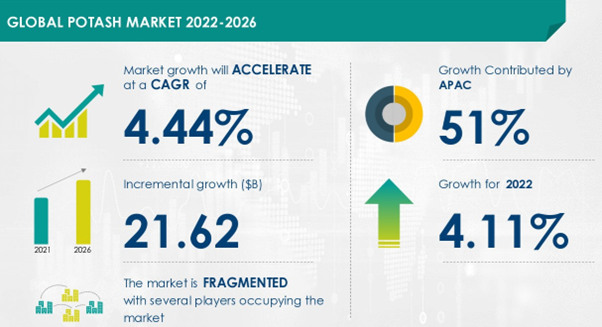
Another market research report conducted by Fact MRgave a medium-term market forecast, predicting the global potash fertilizers market to be valued at US$28.9B in 2022, which is expected to expand at a CAGR of 5.4% to reach a market valuable of US$48.9B by the end of 2032, evidence of significant strong demand.
Factors such as crop growth challenges due to climate change, restricted exports from Russia, Belarus, and China, soaring natural gas and coal prices and limited production capacity from potash companies, has influenced the existing tight supply of potash, and will trigger future demand.
Potash market outlook: 2022 and beyond
Judging by potash’s central role in fertilizer use and agriculture, strong consumption demand, as well as supply constraints in the short-term, many industry analysts have confidence in its market prospects going forward.
Leading potash miners such as Nutrien and BNP also foresee promising profit gains amid a steadily growing trend of potash prices, estimating a solid market outlook of the critical mineral.
To stay up to date with the latest developments in the market, be sure to check out our market insights.


